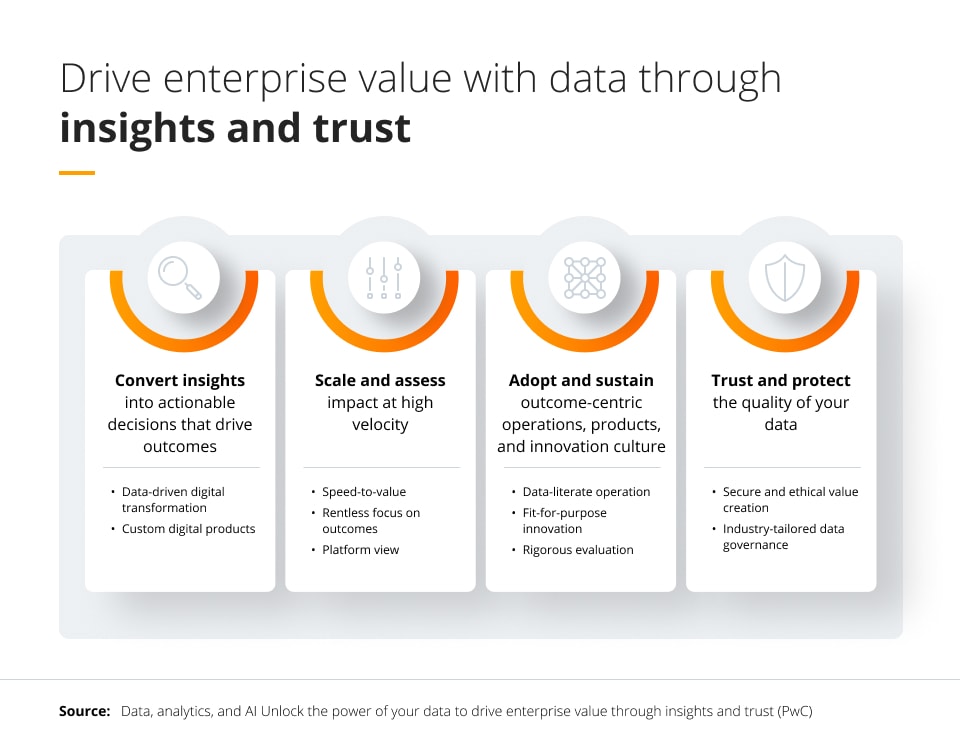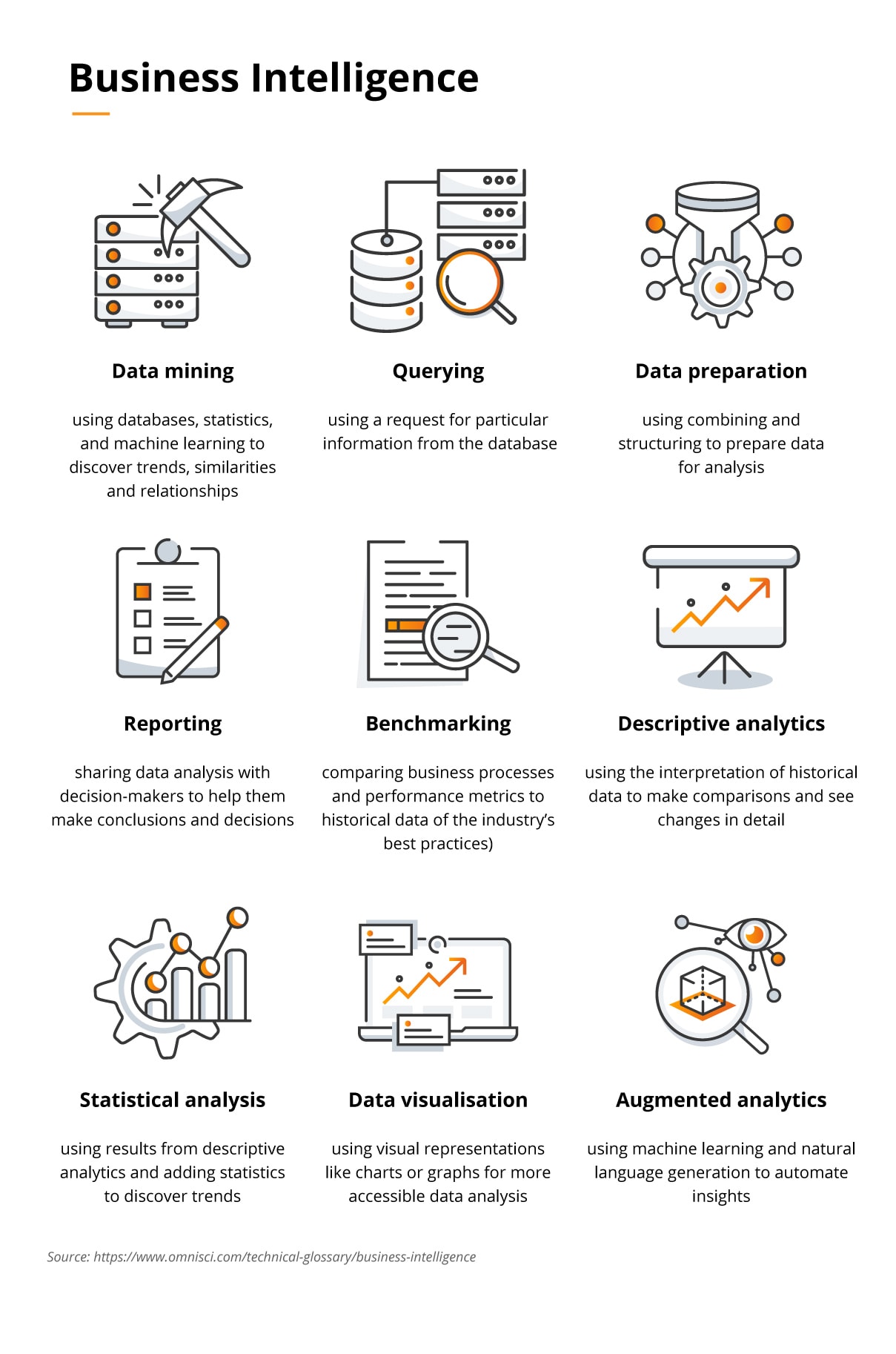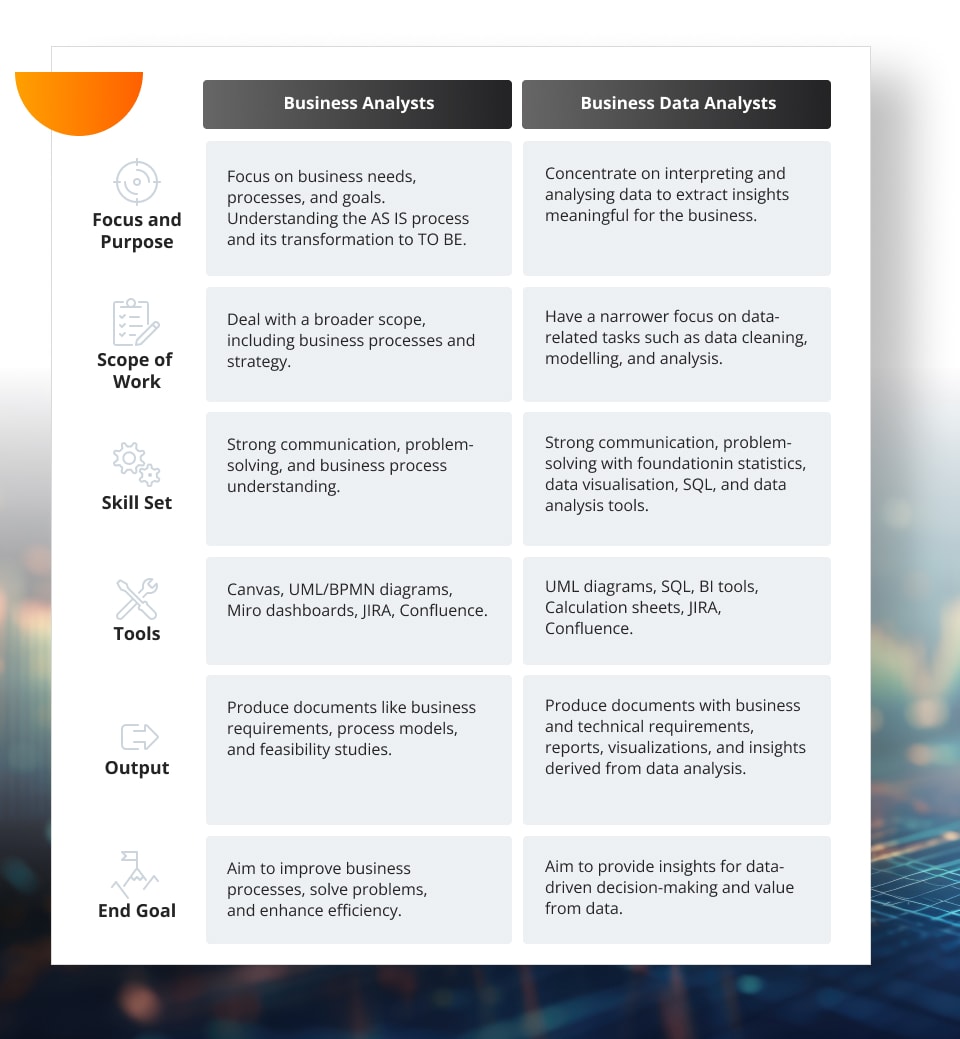
The role of Business Data Analysis in a data-oriented project
Data analysis is trendy. We create, use, and share massive amounts of data every year - there's no avoiding it. IT companies used to focus mainly on storing and processing data, but now it’s not enough. It's also about understanding the data and figuring out the best ways to use it, and that's where Business Analysts come into play.
Introduction to Business Data Analysis: a gateway to project success
According to a portal cio.com, the main priority for CIOs (Chef Information Officers) is to “Gain stronger control over data”, whereas exactly one year ago the same portal placed data-related needs on the 5th place.
The same trend is also visible in a PWC report: collecting data is not a challenge anymore, but making it meaningful and controllable is a different story. Also, job portals entered the new year with dozens of articles regarding AI, Machine Learning, new customer trends, Data Analysts and cybersecurity solutions.
A quite common role of a Business Analyst (BA) in IT companies is usually responsible for gathering requirements, maintaining the backlog of the product features, and acting as a communication bridge between the technical team and business stakeholders.
It would seem that the more technical and data-oriented the project is, the less space it gives for classic BA work, as it doesn’t fulfil the demand on having AI and data skills. That is only partially true, because there is no “classic” set of BA activities. It is quite understandable that the profile of a Business Analyst varies between companies.
Even inside a single organisation such as Future Processing, we have BAs with business, industrial, or technical backgrounds. This diversity makes the team versatile and ready to take on every challenge.
This means that some Business Analysts can be easily transformed into Data Analysts – Business Data Analysts (BDAs) – and bring unique value to data-oriented projects.

Unique value of having a Business Data Analyst in a data project
The analysts play a crucial role in data-oriented IT projects by bridging the gap between business needs and technical IT solutions.
They are ensuring that data projects are not only technically sound, but also closely aligned with business strategies and client needs. Their ability to analyse historical data, understand business contexts, and communicate effectively makes them indispensable in the realm of data driven solutions.
The opinion expressed by one of our clients that BDAs work with in a data-oriented project clearly shows that value delivered by this role is noticeable and appreciated.
“The business/data analyst role are an integral part to the team’s success. They play an imperative role by bridging the business need with the technical feasibility. I consider these members more as POs. They help manage the roadmap deliverables and write/refine at the story level. By fulfilling this role, I feel they address key risks. It allows the team to discuss issues in Polish, so they can do so comfortably, and it gives me the opportunity to spend more time with our stakeholders to ensure we’re meeting their needs. In short, this role is a key enabler to the team’s success.”Our Client
Impact of Business Data Analysis on project outcomes
Here are several tasks that show the value of having a Business Data Analyst working hand in hand with data engineers, architects and POs (Product Owners).
Requirements gathering
BDAs work closely with business stakeholders to understand their objectives and gather the requirements (both technical and business-oriented).
They focus on requirements specific to security, mapping, and modelling areas.
Data analysis and profiling
BDAs analyse the existing data sources to understand the quality, completeness, and relevance of the data.
They profile data to identify trends, patterns, future outcomes and potential issues that may impact the project.
Data modelling
They collaborate with data engineers to define data structures, relationships, and entities that align with business requirements.
Business Intelligence (BI) and reporting (data visualisation)
They define and document Business Intelligence and reporting requirements that can be transformed by BI developers into insightful dashboards.
Data validation and testing
BDAs work with the testing team to ensure that developed functionalities meet business requirements.
Stakeholders communication
They act as a bridge between business stakeholders and the IT team, ensuring clear communication and understanding between the two groups.

Similarly to the projects where products don’t require working with data directly, a Business Data Analyst can be a game changer enabling the customer’s business to grow and increase its value.
Data is collected by various industries that usually don’t need their own IT team to properly store, analyse and transform it into something meaningful. In such cases, a Business Data Analyst can also play the consultancy role at the beginning of the collaboration and – together with a Data Architect – recommend the most suitable technical solution considering aspects that aren’t visible at the first glance.
This way, clients with and without technical backgrounds can find the valuable and insightful partners in Business Data Analysts.
Business Data Analysts vs Business Analysts
To understand the transformation from a Business Analyst (BA) into a Business Data Analyst (BDA), let’s try to dive deeper into differences between these two profiles’ focus and skillsets.
Both roles aim to solve business problems, and contribute to overall business efficiency and effectiveness, however only BDAs help organisations derive value from their data and support data-driven decision making.
Therefore, the significant difference can be spotted also in the tools used: the tasks of business data analysis more often require to write a SQL script or assess the quality of data with calculation sheets or BI tools.
At the same time, BDA is the person that usually doesn’t need go deeply into each and every aspect of business processes and challenges.
There is clearly an overlap in skills and the scope of work, but the key difference lies in the focus and objectives of the roles. Very often the distinction of the roles inside organisations is not even required.
What is important to notice is that the role of analyst is not only important after the project’s kick-off, but also during the presale and discovery phases that shape the further collaboration.
At Future Processing, we believe that a Data Analyst is just a specialisation of business analysis rather than a separate role, however, due to the technical skillset – it is not something that every BA wants and can achieve.
Example of Business Data Analysis: case study
Client representative: Product Owner (PO) with technical background
Project: Maintenance and development of the data warehouse supporting BI reporting needs.
Challenge: The risk assessment team required access to the clients’ credit data to develop business intelligence reports. These reports would aid in evaluating risk during the initial phases of contract signing.
Task seemed to be easy. The aim was to take the set of columns filled with data from source A and bring it into data warehouse for reporting purposes by the BI team. The team of data engineers had done this multiple times before, it was supposed to be a piece of cake with totally acceptable number of story points and doable in a 6-weeks iteration timeslot.
Usually, migrating data from one system to another requires close collaboration between the teams and units, various types of accesses and architectural meetings to make everything work together. Especially at large companies and corporations.
It would be a great challenge for the Product Owner to prepare everything for the BI team, coordinate work between units, and keep control over risks at the same time, when each team had their own priorities.
It was understandable for everyone that the first priority for the BI team was not the highest one for the whole company, and many things needed to be kept in sync.
The main challenges related to the coordination that we faced were:
The development team didn’t have access to the data source and gathering it required days or weeks of waiting for the external acceptance, as the security team managed requests for the whole company and needed time to process them;
The business data that needed to be brought into a new data warehouse was sensitive. PIA (Privacy Impact Assessment) process and anonymisation were required, with collaboration with the Data Office.
The team responsible for the source had their own priorities and was in the middle of changes that needed to be discussed and taken into account from the architectural point of view when designing the solution.
Without the involvement of BDA, all those points could become the ping-pong conversation between data engineers, the Product Owner and third-party units. Such a solution is not efficient, especially taking into account the backlog of work waiting for all sides.
It was much more effective to engage an analyst that collected all challenges first, prioritised and filtered them before discussing them with engineers or the PO.
What is worth to mention is that such a list is not a one-time incident or the result of ineffective management. This is something that happens all the time in both data and non-data projects and is completely normal. Another aspect is the requirements gathering phase, that thanks to the BDA’s independence was time-efficient and insightful.
The level of business and technical understanding was enough to meet the business stakeholders without any assistance, define the initial scope of work, and create the documentation with target data models and mappings required by data engineers. The analyst was even capable of testing the provided solution and building a simple BI dashboard allowing stakeholders to validate the data without the need to access the data warehouse.
Thanks to this, the initiative was a huge success, the development team could focus on a technical design or other tasks waiting in the backlog, and the Product Owner could coordinate more business-oriented aspects of the work and make sure that everything else goes according to plan.
Certain tasks could have been undertaken by data engineers or the Product Owner – a Business Data Analyst doesn’t stand out as extraordinary when examining individual activities.
However, when considering the broader perspective, it becomes apparent that this individual can tackle challenges from various angles, quickly emerging as a highly valuable asset.





